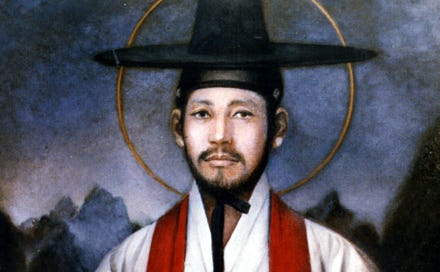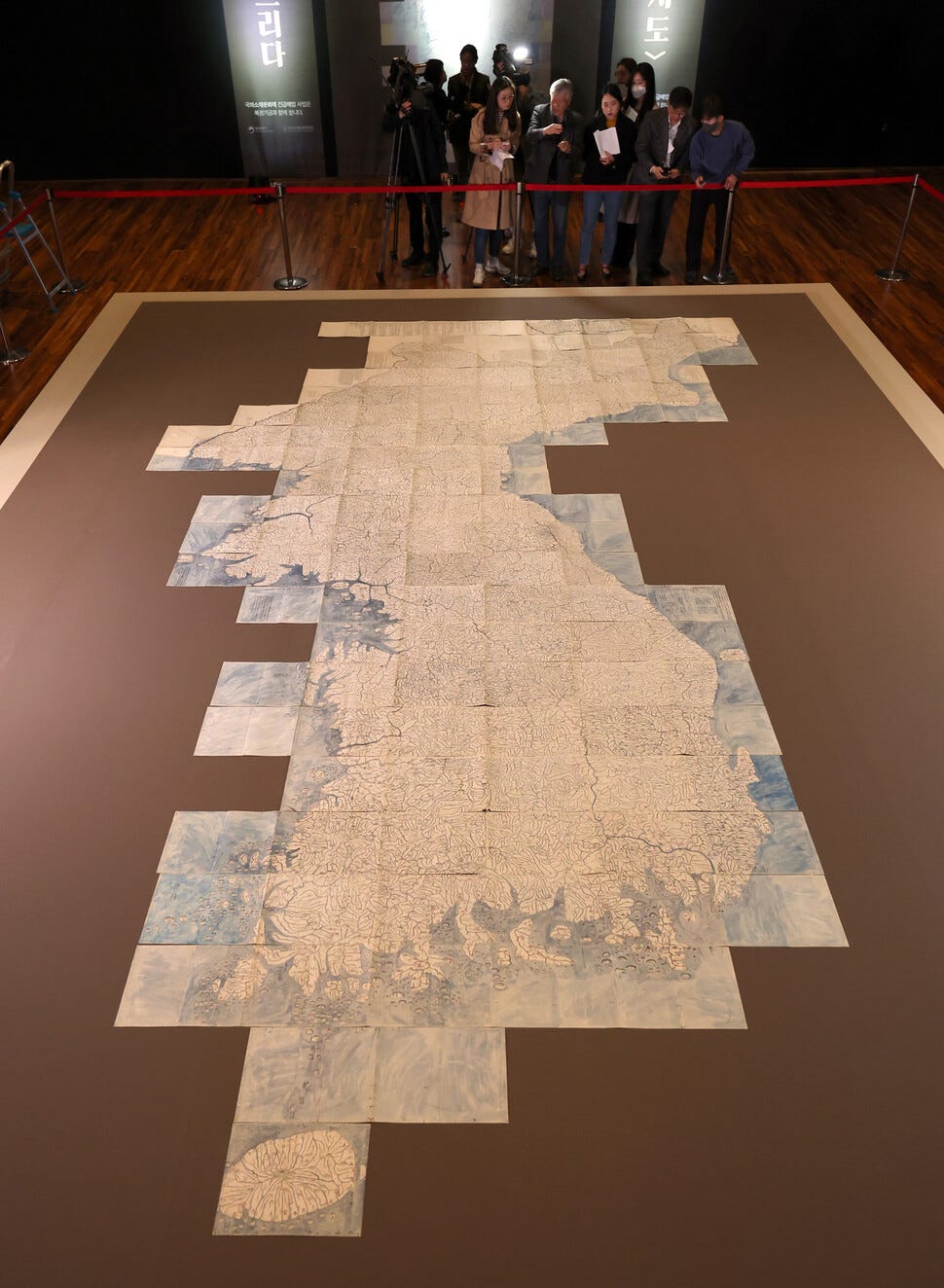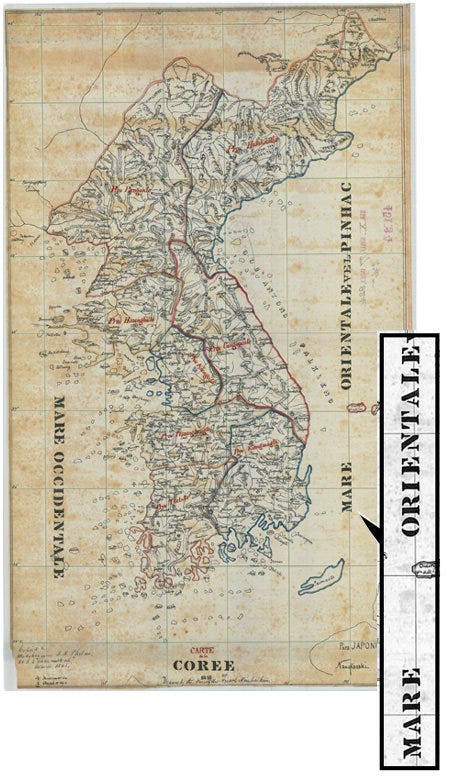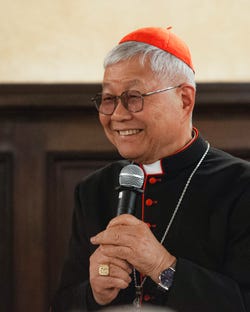Saint Kim Taegon, the First Korean Catholic Priest
First of all, his name is 김대건, so it should be spelled Kim Dae-gun or Dae-geon. There is no “T” sound in his name. But that’s how his name was spelled to the rules of what’s called the McCune-Reischauer Romanization of Korean Letters, which was developed in 1930s and not much in use these days. So, as imperfect as it is, we’ll go with it.
The title says it all about who he was, and we’ll get back to him in a moment, but let’s first talk about some old maps.
Records indicate that ancient Korean dynasties of the Three Kingdom Period, about 2000 years ago, had produced a map of Korea that’s been long lost. There are other indications that dynasties that followed had a map of their own but those have been lost as well.
… which takes us to the oldest Korean map (world map, actually) that survives today that was produced by early Joseon dynasty cartographers in 1402, currently held in Japan.

China in the middle is absolutely humongous, Korea is on the right side of the map and shown disproportionately large, Japan is turned 90 degrees clockwise and disproportionately small, AP is the Arabian Peninsula, and AF is of course the African continent. The huge “water” inside the African continent is thought to be Lake Victoria. There are markings of “Western Europe” but it’s kind of mashed together with no clear indication of the Mediterranean Sea.
Korean textbooks always refer to Kim Jeong-ho’s Daedong-yeo-jido (김정호, 대동여지도) when it comes to the most historically important and accurate map of Korea made during the Joseon dynasty. Completed in 1861, it is actually a mosaic of regional maps and it’s enormous, as you can see in the picture below.
Unbeknownst to most Koreans, there was a similarly accurate map that was produced 105 years prior by another Joseon cartographer. Kim Dae-geon, borrowing from it, annotated all the names in French one year before he was executed in order for it to be introduced to Europe and the Catholic world.
There are two points of significance here. First, this marks the very first time the word “Seoul” is written anywhere. And second, we can glean from the map that the city, despite its official name of “Hanyang (한양),” was indeed popularly known as “서울 (Seoul)” 200 years ago, probably longer.
Mind you, Kim was not the first Korean Catholic, as he is sometimes mistakenly known as. Korean history textbooks don’t really discuss him in great detail—I remember maybe 2 lines about him written in textbooks when I was in middle school.
I don’t know much about Catholic history in Korea except these few points:
people of Joseon knew about it since the early 17th century
but not so much as a religion, but a scholarly subject called “Western Studies (서학)” at first
there were known Catholic missionaries in China as early as the 13th century
so, it is more than possible that a few Joseon emissaries to China may have known about it even before the 17th century
Anyhow, by the time Kim Dae-geon was born in 1821, there was a considerable Catholic movement within Joseon and a lot of brutal persecutions as well. Kim being the first martyr, as many of us were taught in schools, thus is erroneous. He comes from a rather long line of Catholic family, for his great grandfather, grandfather and father were all baptized Catholics.
When he was 16 years of age, Kim, along with two others, were sent to Macao on foot, a Portuguese territory in China, that was 5,000km away (3,100 miles, roughly from LA to Boston) to study to become a Catholic priest. There he learned Latin, Chinese, French, cartography (map making), and of course the Bible.
In 1845, at the age of 24, Kim was ordained in China as the first Korean Catholic priest, only to be captured, tortured, and beheaded one year later at the age of 25 when he was trying to get back into Joseon by a fishing boat from China.
Fr. Kim was canonized in 1984 by Pope John Paul II, as Sanctus Andreas Kim Taegon.
At the Vatican, there stands this statue of him, the first and the only Asian, so far, to adorn the outer walls of St. Peter’s Basilica, dressed in the traditional Korean garb but also with the fascia (Catholic priest’s sash).
** side note: Keep an eye on the conclave happening right now at the Vatican. There is a peculiar name—a long shot, to say the least—on the list of possible candidates that may get some votes to become the next Pope, the first Asian. He was the person largely responsible for erecting this statue of Kim Dae-geon at St. Peter’s Basilica.
Catholicism has had some very important influence on the Korean history and society. It not only brought in western scientific knowledge in mathematics, and calendar and map making, it provided the one and the only impervious sanctuary1 for the student activists during the hard-fisted military-style governments of 1970s and 80s, and the lifelong works of Belgian priest Fr. Ji Jeong-hwan (지정환, Didier t’Serstevens) with cheesemaking in Im-shil and Irish priest Fr. Im Pih-jeh (임피제, Patrick James McGlinchey) with livestock farming in Jeju.
Myong-dong Seong-dang (명동성당), “The Cathedral Church of Our Lady of the Immaculate Conception” right in the heart of downtown Seoul. Even the military didn’t/couldn’t enter the halls where student activists were hiding out.










